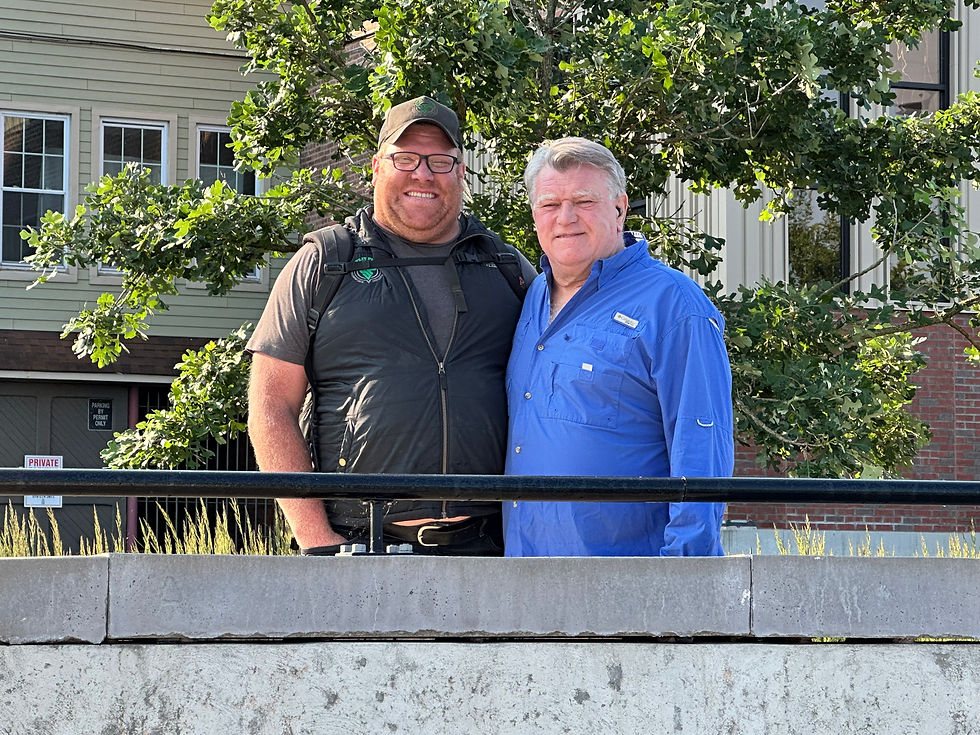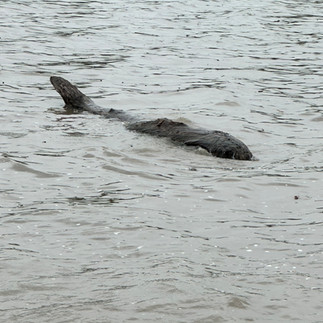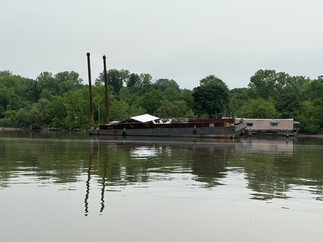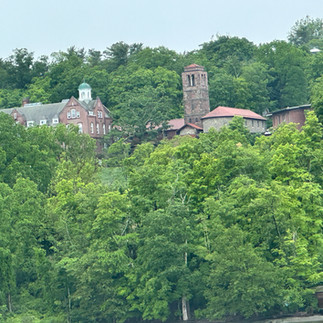Up the Hudson
- csheffer2
- Jun 16
- 4 min read
River boating is different! What it is not is ocean boating. It is smooth for the most part (unless someone wakes you as they pass by) and you can see land on both sides. That being said, the Hudson is a big river with a strong current, and in the spring full of flotsam and debris from ice melt and spring runoff. So, going fast (above 15 knots) is not necessarily an option when you are dodging logs! Both days we travelled the river, it was pouring rain making visibility somewhat less than desirable but not ever like Nova Scotia fog.
The Hudson (named for Henry Hudson, although was also known as the North River [Dutch influence] and other names within the various indigenous populations endemic to this area [https://en.wikipedia.org/wiki/Hudson_River]) is a busy river with pleasure and commercial water craft travelling its length.
It is surrounded by breathtaking scenery on both sides. We passed under many bridges on our northward journey. Trains - passenger and freight - could be seen on both sides of the river, travelling to and from NYC.
Many industrial sites are to be seen from the water as we floated along - power plants, cement factories, gravel and manufacturing plants, and waste disposal.
Interspersed amongst these sites were large and small communities, using the riverfront for boating activities, some with years of history behind them. Battles of the American Revolution were fought along this river, marked by various monuments to commemorate such occasions. There were also many homes, large and small, claiming river frontage located fair distances from towns - rural upstate New York, I guess. We did pass by West Point without incident :).
We also got by the Benedictine abbey, Holy Cross Monastery (https://holycrossmonastery.com/history/) without being smote - also a good sign!
Of course, I would be remiss if I failed to mention the very picturesque lighthouses: clockwise from top left are the Esopus Meadows Lighthouse (https://www.hudsonriverlighthouses.org/esopus-meadows.html), the Rondout Lighthouse (https://www.hudsonriverlighthouses.org/rondout.html), the Saugerties Lighthouse (https://www.hudsonriverlighthouses.org/saugerties.html), and the Hudson-Athens Lighthouse (https://www.hudsonriverlighthouses.org/hudson-athens.html).
About six hours after leaving Stony Point, we rounded Rondout Point, and entered the Kingston City Marina. We stayed here for two nights. Kingston is a small town with its waterfront located on Rondout Creek. The Esopus people, the Dutch, and the British were instrumental in settling and developing Kingston into the original capital city of the state of New York in 1777. However this status was fleeting, and today it is still a city albeit a very tired municipality with diminished wealth and inhabitants. The city has worked hard to gentrify its waterfront, creating some good restaurants, interesting museums, and beautiful green spaces. Given we have embarked on the Great Loop, it is noteworthy that Kingston is where we first met other 'Loopers' and in fact, were invited to supper with three other couples currently in varying stages of their own Loop journeys. What a great community to be part of for this adventure!! Some photos of Kingston:
After two nights in Kingston, we were on our way again headed to Troy, NY. Again, in the rain. Planning for this trip has been made difficult as part of the Erie canal between Lock 16 and 17 is closed to boat traffic due to canal failure/leaking. It has not been a great spring for upstate New York and its canals. So we head out, moving closer to the start of the canal but not sure how far we will get, and wondering if there will be dockage available as we are not the only Loopers in this situation. We have two nights booked in Troy - but nothing else is available on the Hudson!

We arrived in Troy after six hours of cruising. A lovely facility, the dockmaster was very accommodating and welcoming to us, and reassuring that he would not kick us out if there was nowhere to go upstream in the next few days. We met many other great folks who are doing the Loop here in Troy. Their stories have been varied and interesting to say the least! We did not explore Troy as much as we could/should have, but we did hit Market 32 for groceries. Troy is a bedroom community of Albany, NY. Once a center of industrial manufacturing, primarily steel, the city experienced a loss of business and its population. It is currently undergoing a rebirth as business and tourism create opportunity and reason for people to live and work there. Again, the waterfront is undergoing a redevelopment with many bars and restaurants enjoying success. One such business, Brown's Brewing Company provided sustenance for us as we watched the Oiler - Panthers play their third game at their bar on the pier.
Some photos: cruising by Albany, the lift bridge in Troy, the line of boats including ours at Troy City Marina, and Brown's Brewing Company.
A highlight of our stay in Troy was that Scott - transiting from Milwaukee to Halifax with his new truck - was able to stay with us for one night. It was a joy to have him on the boat, even if only for such a short time!

After two nights, we were informed that the Erie canal was opening for business again. Troy is the jumping off point for the canal so I will use this fact as a natural end for this installment. Until next time, ....














































































































Comments